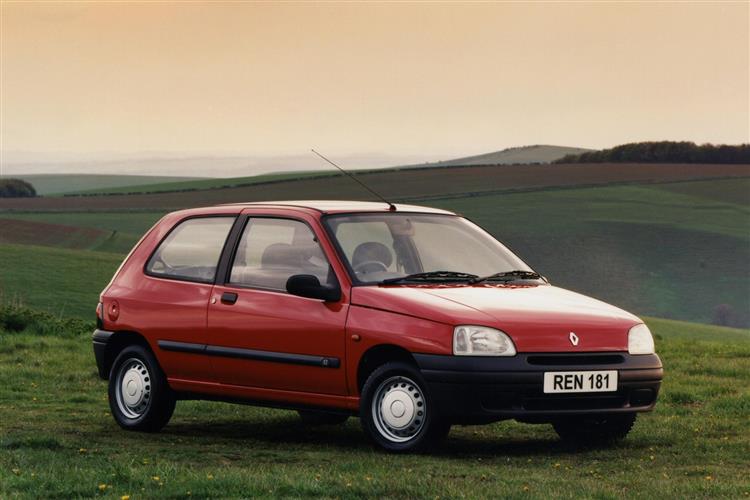Images

1 / 9
Thanks to `Papa and Nicole` on the television, Renault's Clio has become one of France's most successful supermini imports ever. And as sales continue to grow, the car's used market presence in both first and second-generation forms becomes even more significant.
+ More
History
The first generation Clio was launched to a fanfare of approval in 1991 in three and five-door hatchback form with 1.2 and 1.4-litre petrol engines, followed by 1.8-litre petrol and 1.9-litre diesel units. Trim specifications ranged from base RL with a radio cassette and not much else through RN (which had a sunroof) and on to RT with electric windows, power steering and remote central locking. An automatic option was also offered.
For hot hatch fans, a 16-valve flagship was soon announced, while the even faster 2.0-litre 150bhp Clio Williams arrived in 1993; two more variants of this car were to follow. There was also a compromise 1.8-litre RSi `warm hatch` to please the insurance companies.
What Renault called `a beauty makeover` was announced for the Phase II cars in 1994. This amounted to a revised grille, improved sound insulation and body side strips. There were also revised taillights and different body colours, while the interior had new upholstery. Finally, in 1996, the Phase III models arrived with a new nose, airbags and an all-new 1.2-litre engine. These lasted until the summer of 1998 when a completely new Clio arrived.
+ More
What you get
The best small Renault ever made; both in terms of build quality and design. It's good - but not great - to drive and cheap to run. In essence, this is the French learning a thing or two from the Germans.
+ More
What to look for
Some early models had teething problems, so be wary of 1991/1992 examples and look for things like sticky clutch cables, faulty speedometer cables and electrical faults. The diesel makes sense if you simply want to get cheaply from A to B.
Second generation cars are much better built and have yet to show signs of any serious faults. Make all the usual checks, look for trim damage and ensure the service history is up to date.
+ More
Replacement parts
(approx based on a 1995 Clio 1.8 16v - inc VAT) A clutch assembly will be around £75. Front and rear brake pad sets are just over £25. An exchange alternator is about £115 and an exhaust system is close to £315. A headlamp should cost around £90, a starter motor up to £95 and a radiator should be no more than £90.
+ More
On the road
Renault has gone to considerable lengths to 'engineer in' refinement to its smart supermini - and it shows, even on the briefest of test-drives. The body should last longer too, almost half the panel-work being protected by galvanising or zinc coatings. If there's a downside to that, then it has to be the penalty of weight - a factor which is obvious in the performance on offer behind the wheel. Still, what's there will be quite adequate for most owners and over 40mpg is easily available in normal use with the 1.4, for example.
+ More
Overall
The Renault Clio adds up to a car that makes the increasingly difficult grade in the used car market's small car stakes. And there's still enough chic to keep Nicole smiling. What more could you ask for?
+ More
Have you considered these alternative models...
Find a Review
We have over 500 new and used car reviews to help you find your next car.
Browse reviews and model guides for all makes